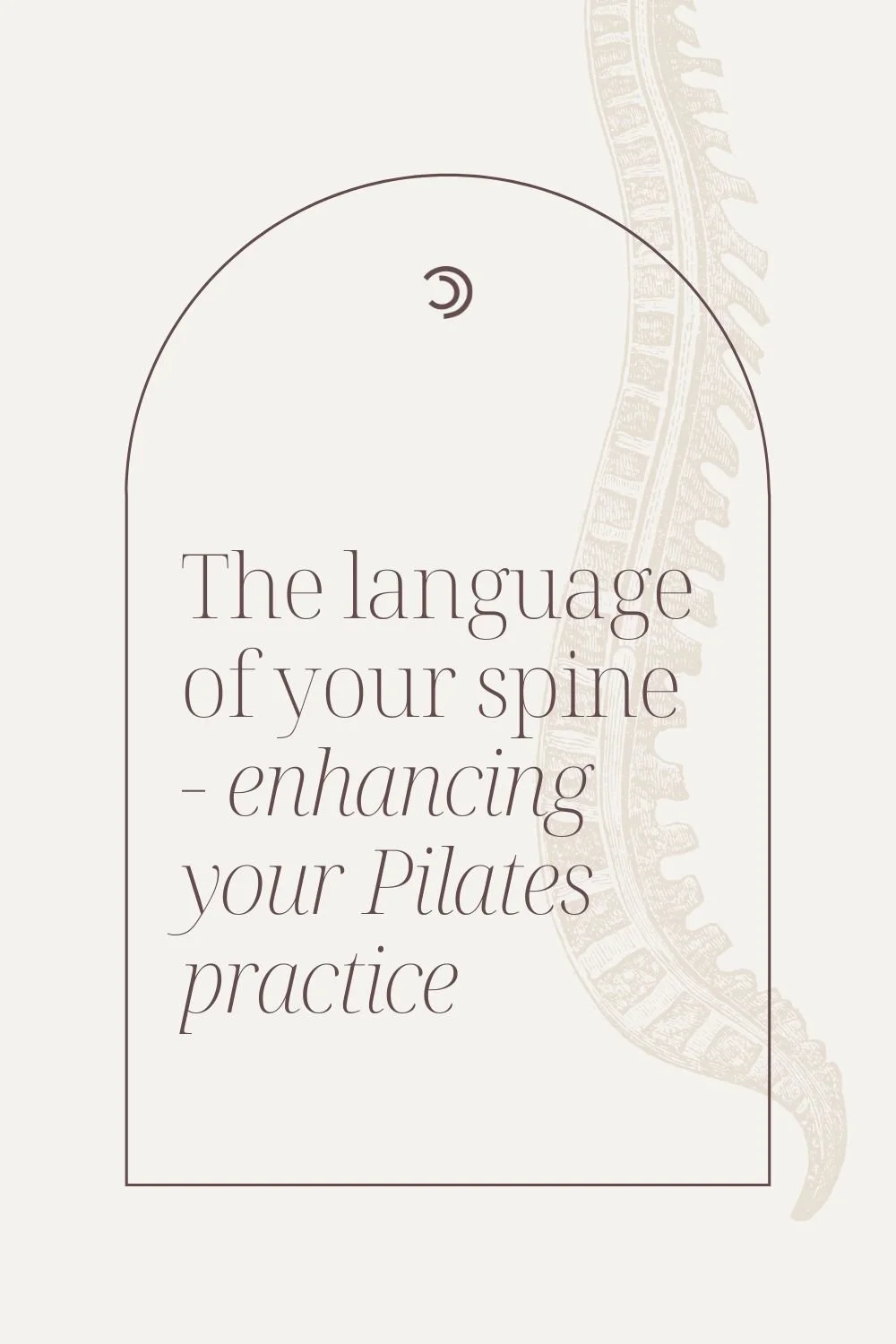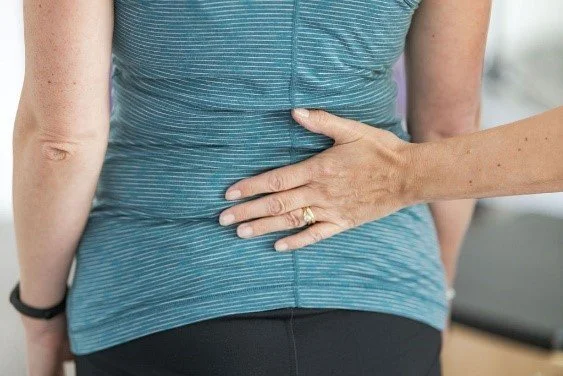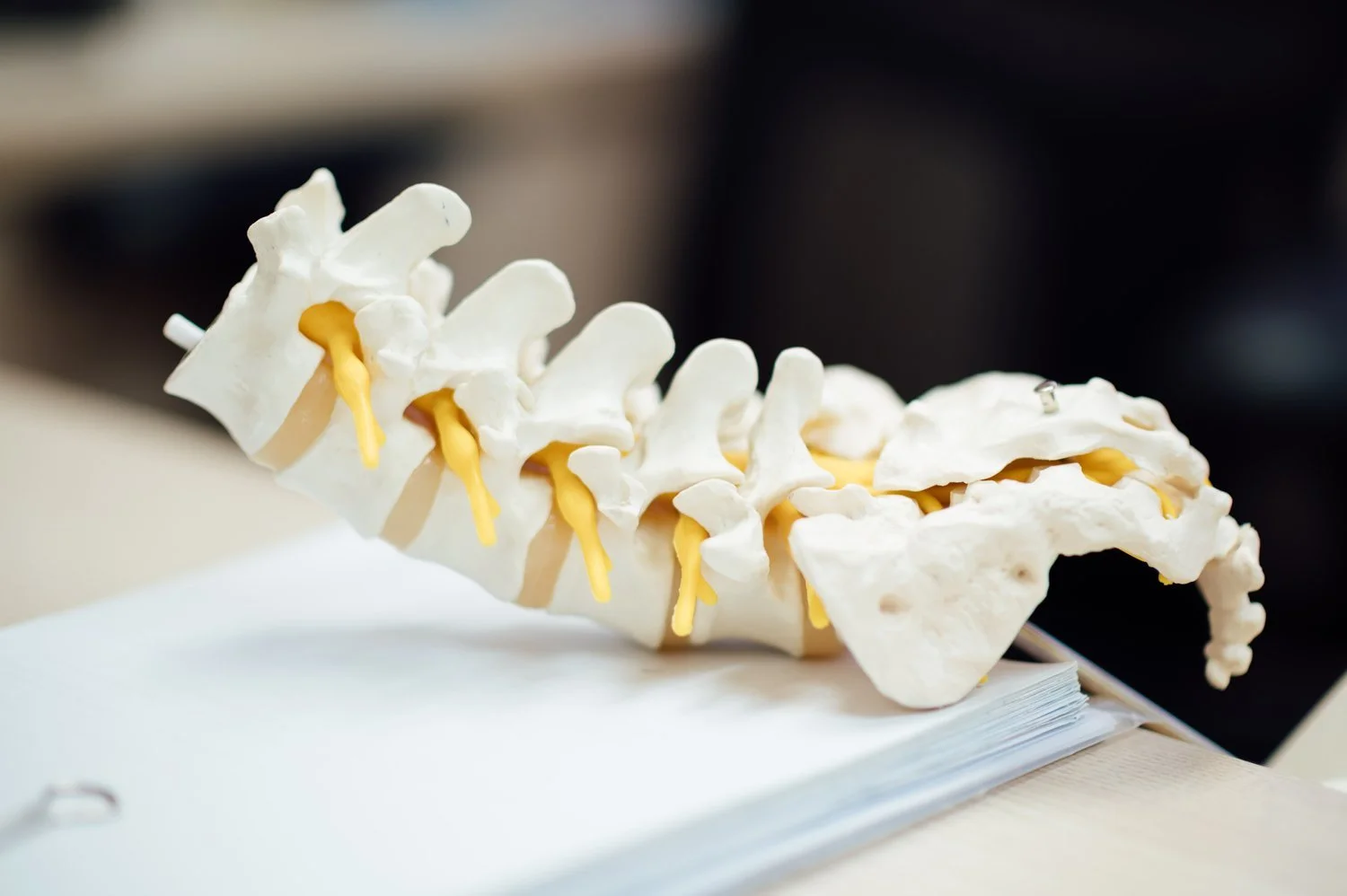The language of your spine - enhancing your Pilates practice
The benefits of Pilates in terms of spinal health have been well documented. It was Joseph Pilates himself who said:
If your spine is inflexibly stiff at 30, you are old, if it is completely flexible at 60, you are young’
[Return to Life through Contrology, originally published in 1945]
As an instructor, I don’t expect or require you to be an anatomical expert. However, it is useful to understand and recognise some key points about the Spine in order to enhance your practice and also your everyday movement.
For example, if you’ve ever been in a Pilates class, and are instructed to ‘rotate at your thoracic spine’, or ‘lengthen toward your tailbone’ are you sure what you should be trying to do? Here’s a rundown of key terms for you, in alphabetical order: I hope you find them useful.
Axial skeleton
All bones along the body’s axis (think, ‘along its length’). The term incorporates the skull, laryngeal skeleton (at the throat), the vertebral column (the spine, which we are concentrating on here) and the thoracic cage.
Axial Elongation
Axial Elongation, along with Core Control makes up the second Principle of Polestar Pilates. Axial Elongation provides the optimal environment for segmental movement in the spine and prevents compressive and shear forces that are thought to cause spine pathology (Polestar Pilates).
Cervical Spine
The seven vertebrae that make up the neck. This part of the spine has the greatest degrees of movement compared to other areas. Efficient movement in this area helps support and move the head, and in turn, enhances our senses such as sight and hearing (note that any collapse in the cervical spine means less access to peripheral vision/hearing).
Coccyx
Another word for your tailbone. Whilst other mammals use their tail for balance, as humans evolved to become bipedal, the need for a tail ceased to exist. Technically, it is now made of up 4 small vertebrae fused together. You can see it here in this great 3D model https://www.visiblebody.com/learn/skeleton/axial-skeleton Whilst it is therefore considered vestigial (or no longer necessary) it does have some function in the pelvis, providing one of three points of support in the seated position (hence whilst if sitting for long periods it may get sore)!
Lumbar Spine
My hand on the Lumbar Spine
Made of the vertebrae L01-L5, this part of the spine is primarily designed to bear weight. It also primarily moves in the planes of flexion and extension, with some lateral glide, and very little rotation (in the photo, my hand is on the Lumbar region of the client).
Sacrum
Just below the lumbar spine, these fused vertebrae form a triangular bone, which in turn connects to the pelvis, at the Sacroiliac joint.
Segmentation
The movement of each vertebrae of the spine, independent of each other. Super important for effective movement, and key to some of those Pilates moves you love such as Bridging, Roll-up and the Roll-down!
Thoracic spine
Made up of vertebrae T01-T12 and defined by having a rib attached (ribcage = thorax). We have 12 ribs on each side of the body (there are some exceptions). This part of the spine, to include the ribcage protects our vital organs, but also helps efficient movement in the upper body, (to include the shoulder girdle). We can access a lot of rotation from this part of the spine. Important in moves such as ‘Criss-cross’.
Vertebrae
Interlocking bones that make up the spine. They are different shapes depending on whereabouts in the spine they sit, but they each have a vertebral body for load-bearing, a vertebral arch to protect the spinal cord and transverse processes for ligament attachment.
Vertebral Column
The vertebral column (essentially the spine) is a flexible column made up of 24 vertebrae, plus the sacrum (defined as 5 vertebrae) and coccyx (4 vertebrae, so 33 in total). It extends from the base of the skull to the pelvis and can be broken down into five regions (which essentially categorise the vertebrae): the Cervical Spine (C01-07), the Thoracic Spine (T01-T12), the Lumbar Spine (L01-L5), the Sacral Spine (Sacrum) and the Coccygeal Spine (Coccyx).
Bibliography
Miller, W.J and Pilates, J. (2012) Pilates’ Return to Life through Contrology. Presentation Dynamics.
Polestar Pilates Principles of Movement (2008) Polestar Education, Miami, FL.
Veritas Health (2021) Spine Health. Available at https://www.spine-health.com/conditions/spine-anatomy/anatomy-coccyx-tailbone
Veritas Health (2021) Vertebra Definition. Available at https://www.spine-health.com/glossary/vertebra-vertebrae-plural
Visible Body (2021) The Axial Skeleton. Available at https://www.visiblebody.com/learn/skeleton/axial-skeleton
Photo credit (spine image) Photo by CHUTTERSNAP on Unsplash



